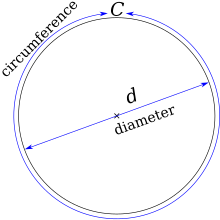
If you're a scientist, or even if you're not, you may be aware that today, March 14, is colloquially known as Pi Day. The enduring standard for countless calculations and computations, pi, otherwise known as 3.14, is used throughout the world to affect uniformity in all matters mathematical. Pi is one of the remarkable events of mathematical constancy: its value never changes. And its decimal points go on indefinitely. One could spend a lifetime calculating the decimal valuations in Pi and never reach the end: in this regard, pi is infinite.
Although technically Pi is the ratio of a circle's circumference to its diameter, its meaning far exceeds its usefulness. By this I mean that in a world that, at times, seems woefully random and chaotic, the planet's structures and systems are, nonetheless, amazingly constant. Over and beyond the unpredictability of history and time, this fragile globe on which we live is, in fact, highly predictable: the ratio of a circle's circumference to its diameter will always be the same. At the same time, the value of this ratio is, put another way, infinite: it never reaches its end.
So there we have our planet: achingly finite, yet astonishingly infinite, a fixed point of materiality in an infinitely bound universe.
Maybe there really is something more than what we can visibly see.
No comments:
Post a Comment